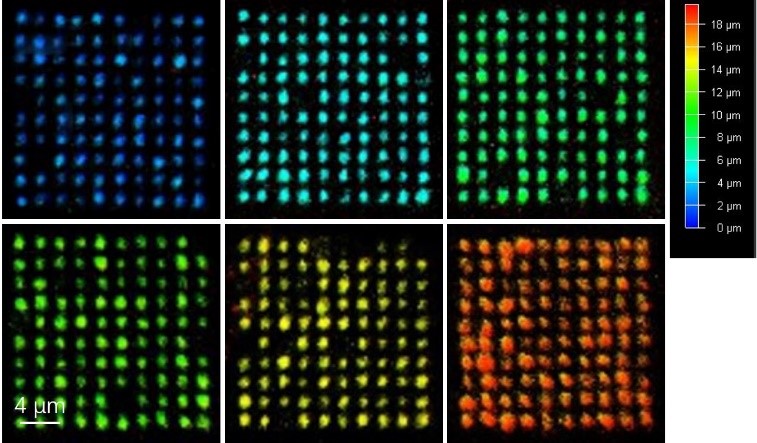Since the aggregation-induced emission (AIE) material was found by the Tang research group in 2001, different kinds of AIE materials have subsequently been developed. However, their main applications are only confined in optoelectrical devices, chemosensors and biological applications.
Recently, researchers from Shanghai Institute of Optics and Fine Mechanics (SIOM) of the Chinese Academy of Sciences and Huazhong University of Science and Technology revealed a novel channel to achieve ultra-large capacity optical data storage (ODS). The finding was published in Optics Letters.
In the experiment, they put as much tetraphenylethene(TPE) powder as possible in one small brown bottle and added some acetone to make a TPE saturated solution. Then a patch of original transparent tape was cut and put in the bottle. They used ultrasound vibration to make sure that the TPE powder was dissolved as much as possible and thus the immersion effect was much better.
They found that, after four months in room temperature, the TPE molecule could permeate into the transparent tape through diffusion function. When finishing the dip process, they put the tape in beaker and utilized ultrasound cleaning to wash the transparent fluorescent tape for three hours. During this process, lens papers were employed in scratching repeatedly the surface of the tape in order to completely clean up the TPE dye deposited on the surface of the tape.
Following this, in order to demonstrate the feasibility of the optical data storage of transparent fluorescent tape, six layers of 3D data bits were recorded with a transverse bit separation of 2 μm and layer separation of 3 μm, respectively. They recorded several 10 by 10 binary data point arrays in each layer using two-photon absorption photobleaching effect. The recorded information inside the transparent tape could be read out using transmitted confocal fluorescence microscopy and the reading results were shown below, where different colors represented different storage depths.
This method explores a total new application of TPE dye and transparent tape in the way of ultra-high ODS and has great potential to realize ultra-high capacity ODS in the future.

Recording and readout result of six recording layers. (Image by SIOM)
Article website:
https://www.osapublishing.org/ol/abstract.cfm?uri=ol-45-6-1535&origin=search
Contact:
Mr. CAO Yong
General Administrative Office
Shanghai Institute of Optics and Fine Mechanics, CAS
Email: caoyong@siom.ac.cn